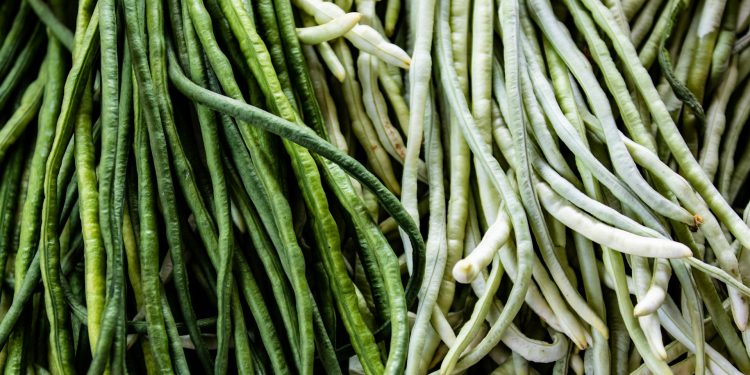Green beans are a beloved staple in many kitchens, used in stir-fries, salads, casseroles, and more. But despite their widespread culinary use, a common question arises: Is a green bean a fruit or a vegetable?
The answer may surprise you. From a botanical perspective, green beans are considered a fruit, but they are typically treated as vegetables in cooking.
This distinction lies in the different ways plants are classified in science and the kitchen. Let’s explore why green beans are technically fruits and how this knowledge fits into the broader world of plant classification.
Botanical Classification: Why Green Beans Are Considered a Fruit
To understand why green beans are classified as fruit, it's important to first look at the botanical definition of a fruit.
- In botany, a fruit is the mature ovary of a flowering plant, usually containing seeds.
- It develops from the fertilized ovary of a flower and serves to protect the seeds as they mature and help in their dispersal.
- Fruits come in many forms, including fleshy fruits like apples and berries, as well as dry fruits like nuts and legumes.
Green beans, or Phaseolus vulgaris, fall into the category of legumes, which is a type of dry fruit. A legume is a plant in the family Fabaceae, and its fruit develops from a single carpel that usually splits open along two seams when mature.
In the case of green beans, we consume the immature pods, which are harvested before they dry out and split open. The beans inside the pod are the seeds, and the pod itself is the matured ovary—hence, under the botanical definition, green beans qualify as fruits.
The Culinary Perspective: Why Green Beans Are Considered a Vegetable
In contrast to the botanical perspective, the culinary world classifies plants based on how they are used in cooking, not on their biological structure. In everyday cooking, a vegetable is typically any plant part consumed as part of a savory dish.
Vegetables include roots (carrots, potatoes), stems (asparagus, celery), leaves (spinach, lettuce), and immature flowers (broccoli, cauliflower).
Because green beans are generally used in savory dishes rather than sweet ones, they are classified as vegetables in the culinary world.
The key here is cultural and functional classification: in the kitchen, we base the vegetable/fruit distinction largely on taste and application rather than botanical structure. Many other fruits, such as tomatoes, cucumbers, and bell peppers, are similarly treated as vegetables because they are used in savory recipes, despite being fruits by botanical definition.
The Legume Family: What Makes Green Beans Special?
Green beans belong to the legume family, which includes other well-known plants such as peas, lentils, and chickpeas. Legumes are a unique group of plants known for their ability to fix nitrogen in the soil, which benefits not only the plants themselves but also the environment.
This nitrogen-fixing ability comes from a symbiotic relationship with bacteria in the roots of legumes, allowing them to grow in soils where other plants might struggle.
From a culinary standpoint, legumes are valued for their nutritional benefits, especially their high protein and fiber content.
Green beans, while lower in protein compared to beans harvested at maturity, offer a wide array of vitamins and minerals, including vitamin C, vitamin A, potassium, and folate. Unlike mature beans, which are typically dried and cooked in soups or stews, green beans are eaten fresh, either raw or lightly cooked.
The Fruit vs. Vegetable Debate: Other Examples
The debate over whether green beans are fruits or vegetables is part of a broader discussion about how we classify plants in everyday life. Many foods that we commonly think of as vegetables are, in fact, fruits. Some examples include:
- Tomatoes: Like green beans, tomatoes are the mature ovary of a flowering plant, meaning they are botanically fruits. However, because they are used in salads, sauces, and other savory dishes, they are treated as vegetables in the culinary world.
- Cucumbers: Another example of a fruit commonly used as a vegetable, cucumbers are the seed-bearing structure of the plant.
- Eggplants and Peppers: Both of these are botanically classified as fruits because they contain seeds and develop from the flower of the plant.
This classification can even extend to nuts and grains. For example, almonds are seeds of the fruit of the almond tree, and wheat grains are the seeds of a grass plant. However, these items are treated differently in culinary contexts based on their uses.
Why Does It Matter?
At first glance, whether a green bean is a fruit or vegetable may seem like a trivial distinction. However, understanding the difference between the botanical and culinary classification of plants can deepen our appreciation of the food we eat. It also reveals how human culture shapes the way we understand and categorize the natural world.
For farmers, botanists, and gardeners, classifying plants correctly is essential for understanding how they grow and how they should be cared for. The classification can also affect agricultural practices, such as how crops are rotated. For example, legumes like green beans are often used in crop rotation to improve soil health because of their nitrogen-fixing abilities.
From a culinary standpoint, these classifications are less rigid, allowing for creativity and flexibility in how we use ingredients. Whether classified as a fruit or vegetable, green beans are versatile and nutritious, providing a valuable addition to a wide range of dishes.
Nutritional Benefits of Green Beans
Regardless of their classification, green beans are a nutritional powerhouse. They are low in calories but high in several important nutrients, making them a healthy choice for those looking to maintain or improve their diet. Some of the key nutritional benefits of green beans include:
- High in Fiber: Green beans are a good source of dietary fiber, which aids in digestion and helps maintain a healthy weight.
- Rich in Vitamins: They are an excellent source of vitamins A, C, and K. Vitamin A is important for vision and skin health, vitamin C boosts the immune system, and vitamin K plays a role in bone health and blood clotting.
- Antioxidants: Green beans contain a variety of antioxidants, including flavonoids and carotenoids, which help protect the body from oxidative stress and may reduce the risk of chronic diseases.
- Low in Fat and Calories: Green beans are naturally low in fat and calories, making them a great addition to any diet without adding excessive calories.
Conclusion
So, is a green bean a fruit? Botanically speaking, yes, it is a fruit because it develops from the flower of the plant and contains seeds. However, in the culinary world, green beans are commonly classified and treated as vegetables due to their savory flavor and the way they are used in cooking.
This dual identity of green beans—fruit by science, vegetable by tradition—illustrates the complexity of food classification and how it is shaped by both biology and culture. Whether you call them a fruit or a vegetable, there’s no denying the nutritional benefits and versatility of green beans in the kitchen.
























